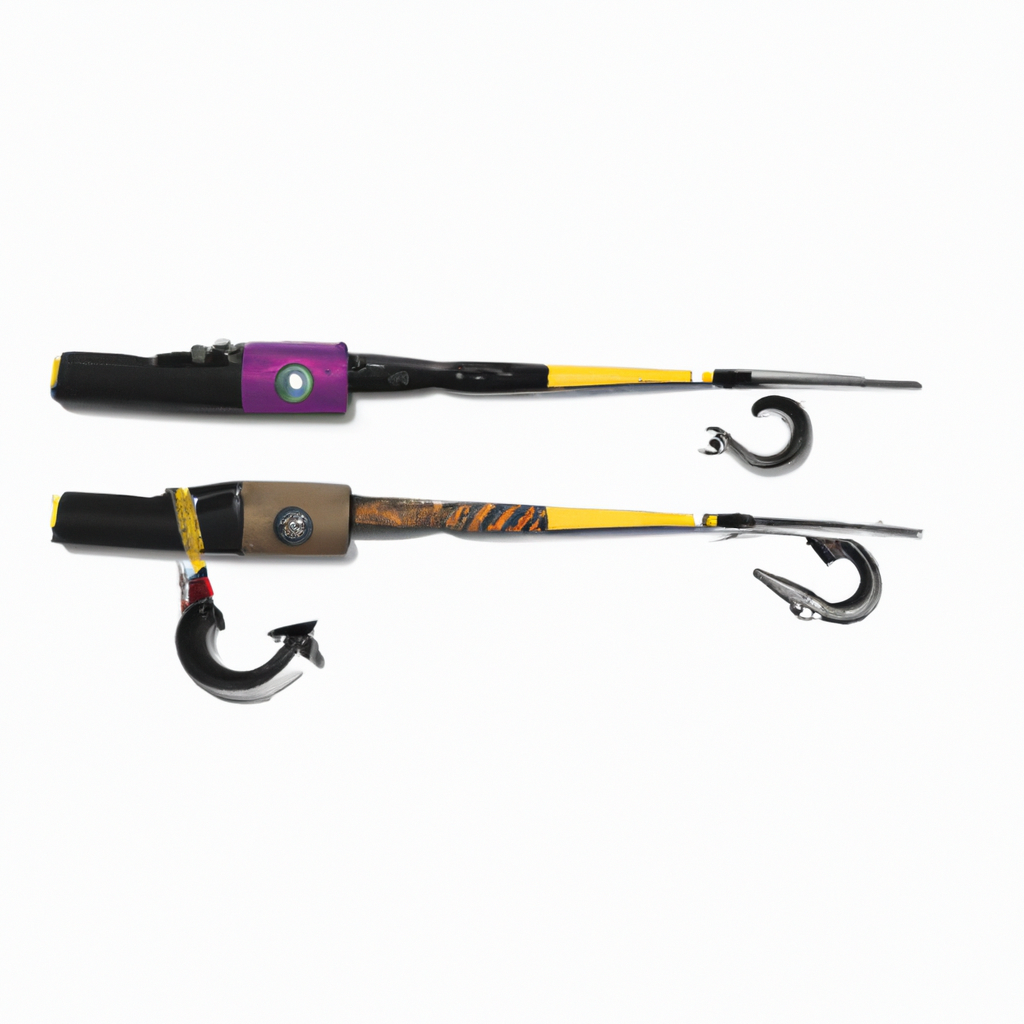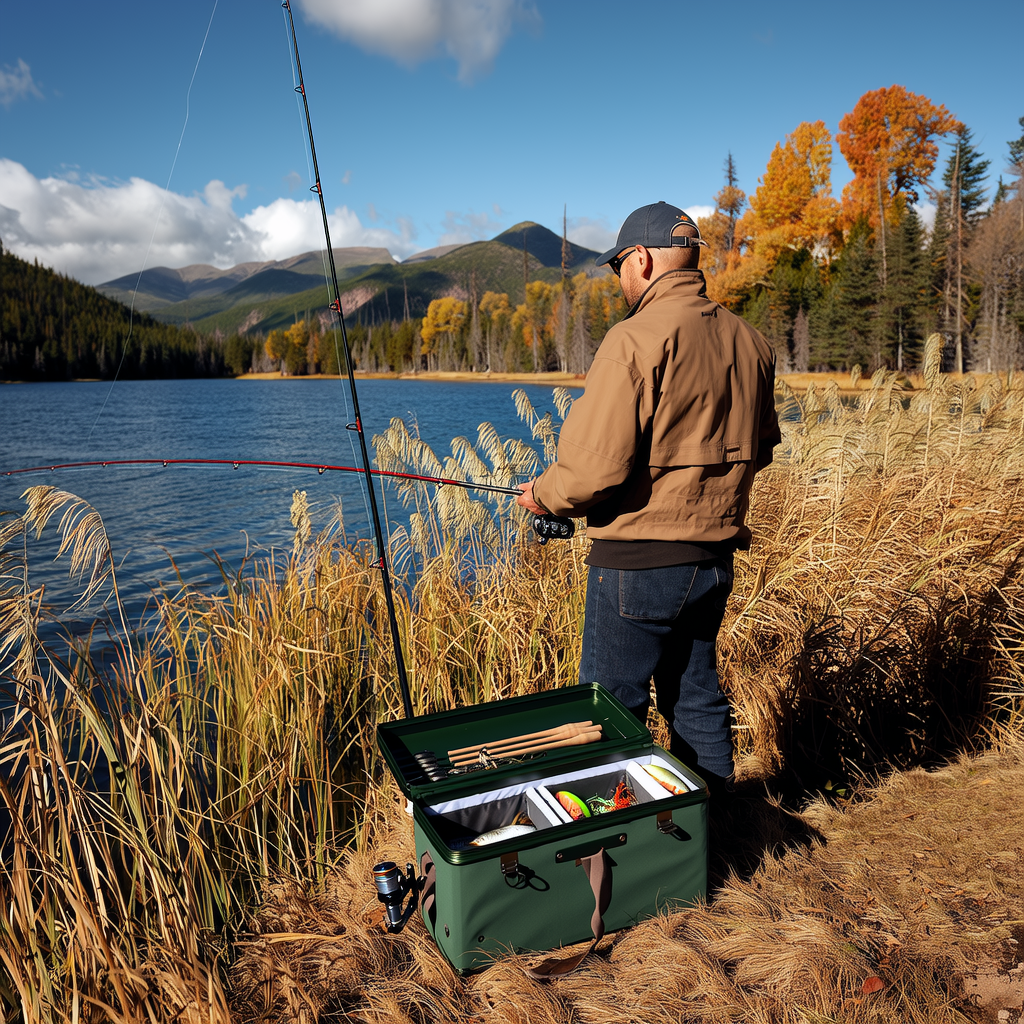Welcome to our comprehensive guide about the tackle box. It is an essential accessory for any avid angler. In this article, you will learn the importance of an organized tackle box and its components. You will also learn how to organize your tackle box. Understanding the importance of a tackle box will improve your fishing experience, whether you are an experienced angler or a beginner.
What is a Tackle Box?
A tackle box is used by anglers as a container to store and organize their fishing equipment. This allows for easy access when fishing. It is a convenient way to store and organize fishing equipment and accessories.
Tackle boxes are available in many shapes and sizes. They are usually made from durable materials such as plastic, metal or fiberglass. The design incorporates trays, drawers, and compartments to facilitate organization. Some tackle boxes include extra features such as built-in rod holders or tool storage.
Organising your Tackle Box
A well-organized tackle box is essential for a successful fishing trip. It saves time and effort. It also increases your chances of landing a big catch. Here are some reasons why a well-organized tacklebox is important:
1. Easy Access and Efficiency
A well-organized tacklebox allows you to quickly find and retrieve specific fishing equipment, such as hooks or lures. This ensures you spend more time on fishing and less time searching for the right gear. Knowing where to store each item allows you to focus on the task and make the most out of your fishing trip.
2. Protecting Fishing Gear
The tackle box will protect your fishing gear from damage and loss. The compartments and dividers of a tackle box keep items from becoming tangled. This reduces the risk of damaged lures, bent hooks or broken lines. A tackle box also protects your equipment against external elements such as sun, water, and excessive heat. This ensures their longevity.
3. Adaptability and preparedness
You can be prepared for different fishing situations by organizing your tackle box. You can customize your tackle boxes with specific equipment depending on the type and style of fishing that you intend to do, such as hooks of different sizes, weights or artificial baits. This adaptability allows you to easily switch between different fishing techniques and target species.
4. Safety and Convenience
A well-organized tacklebox reduces the risk of accident. Sharp hooks, knifes, and other tools can be safely stored within designated compartments to reduce the risk of injury. A well-organized tackle box allows you carry all of your fishing equipment in one compact container. This eliminates the hassle of multiple bags and loose equipment when transporting.
Essential Components in a Tacklebox
Let’s examine the components of this essential fishing item now that we know the importance of an organised tackle box:
1. Hooks
Hooks are an essential part of any tackle box. They are available in a variety of sizes, materials and shapes depending on the species you’re targeting and your fishing technique. Stocking your tackle box with different sizes will allow you to accommodate different baits or angling scenarios.
2. Fishing Lines
Anglers’ arsenals are incomplete without fishing lines. Fishing lines come in different types, such as fluorocarbon or braided. Each type has its own purpose. Fluorocarbon is a popular line that is virtually invisible under water, making it ideal for clearer waters. Monofilament fishing lines are versatile, but are also commonly used. Braided fishing lines are strong and sensitive, making them ideal for certain fishing methods such as deep-sea fishing or heavy lure fishing.
3. Sinkers and weights
Sinkers or weights are used to help lures and bait reach the desired depth faster. They are available in different shapes such as round, bullet or oval. The weights vary to suit different fishing conditions. You can adjust the sinking rate and depth by adding or removing weights.
4. Bobbers and Floats
Bobbers are also known as strike indicators or floats. They serve as visual cues to detect fish bites. They suspend the lure at a certain depth and indicate when the fish has taken it. Bobbers are available in a variety of sizes, shapes, and buoyancy depending on the target species or fishing technique.
5. Artificial Baits & Lures
Artificial lures and baits imitate the movement and appearance of natural prey to attract fish. A well-stocked tacklebox includes a variety lures such as soft plastics or crankbaits to match the preferences or water conditions of different fish species.
6. Pliers and Tools
Pliers and other fishing tools are essential for a variety of tasks, including removing hooks, cutting line, crimping sleeves or bending wire leader. A pair of fishing pliers will ensure that you always have the right tools at hand.
7. Line Cutters and Scissors
Line cutters are a convenient and quick way to cut fishing lines, be they monofilament or fluorocarbon. Choose compact and sharp cutters which fit easily into your tackle box and guarantee precision and ease of usage.
8. Extra Fishing Tackle
It is always recommended to keep extra items in your tackle boxes, such as extra snaps, swivels or leader materials. These extras are useful in the event of equipment failure, lost gear or unexpected fishing situations.
9. Fishing Accessories
A well-rounded tackle kit should also include accessories such as gloves, sunscreen, insect repellent and a first aid box. These items will ensure your comfort, safety and well-being while on fishing expeditions. This allows you to concentrate on the exciting pursuit for fish.
Organizing Your Tackle Box
Let’s talk about effective organization methods now that we know the essential components of a tacklebox:
1. Use Compartments and Dividers
To aid in organization, most tackle boxes come with compartments and dividers. Use these features to separate different types of fishing equipment. Group similar items, such as sinkers, hooks, or lures to facilitate identification and access.
2. Arrange according to frequency of use
Arrange frequently-used items in compartments that are easily accessible. Items such as hooks, line cutters, and sinkers should be easily accessible for fishing. Store items that are not used as often, such as heavy sinkers or spare hooks, in a less accessible area.
3. Keep Sharp Objects Safe
To prevent injuries, place sharp objects such as hooks or knives into designated compartments within the tackle box. To minimize the risk of accidental spillage, ensure that these compartments are closed or covered.
4. Consider Weight Distribution
Make sure that the weight of the tackle box is evenly distributed. This will prevent it from becoming top-heavy or imbalanced. This distribution will prevent items from shifting, or being damaged during transport or accidental drops.
5. Label or Color Code Compartments
Labeling or color coding compartments will improve organization. You can use waterproof stickers or labels to mark each compartment and indicate the specific contents. You can also assign different colors to each category, allowing for quick identification and retrieval.
The Tackle box: A Fishing Companion
The tackle box is much more than a simple storage container. It becomes your trusted fishing companion. A well-organized box will give you peace of mind knowing that all the necessary gear is readily available in any fishing situation. Investing time and effort into organizing it effectively can enhance your fishing experience, and increase your chances of success.
This comprehensive guide should have helped you understand the importance of the tackle box, and how to best use it. Happy fishing, and tight lines!




